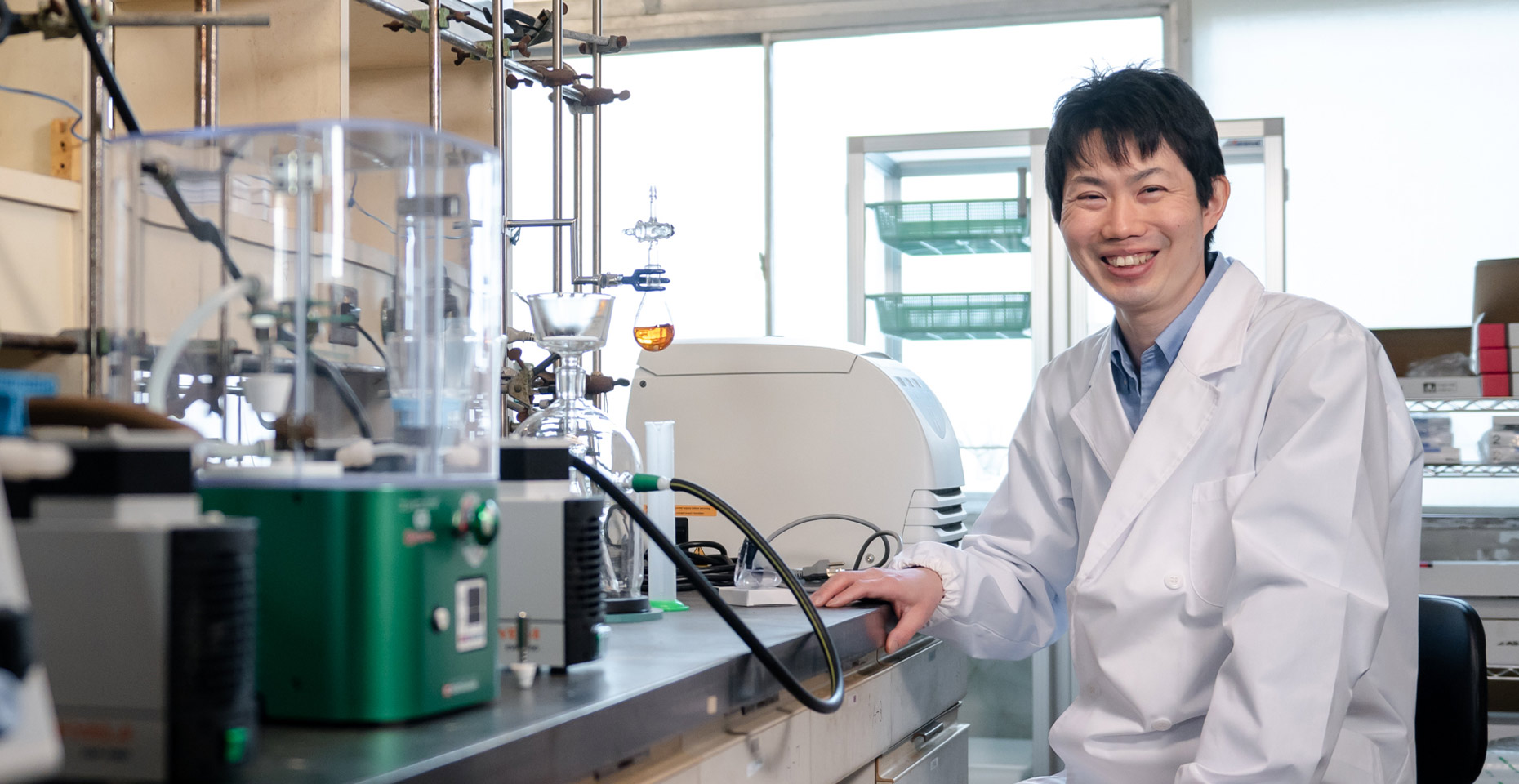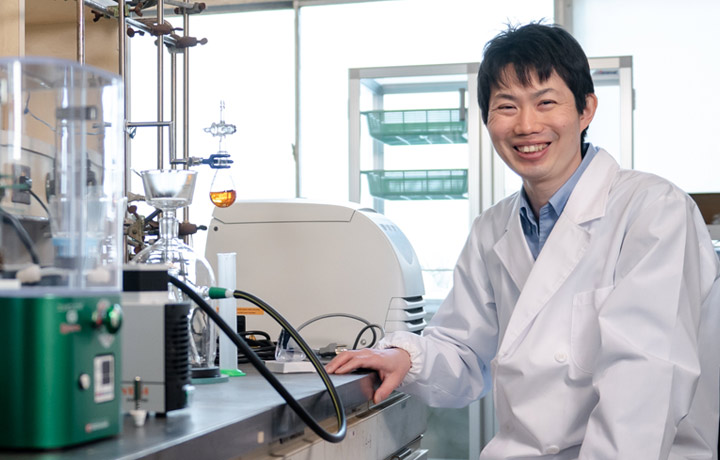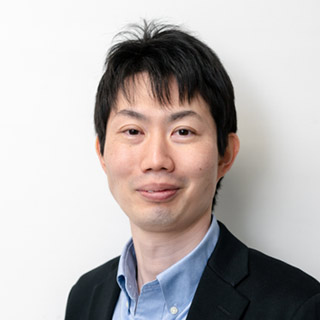From cups and food packaging to automobiles and aircraft parts, plastics (polymers) are used all over the world. Daisuke Aoki, an associate professor at the Graduate School of Engineering, is conducting his research to further expand the potential of plastics.
His current focus is on “changing the shape of polymers freely” and “converting plastics into fertilizer.” In his former research, he received the Young Scientists’ Award from the Ministry of Education, Culture, Sports, Science and Technology in 2022. The latter is groundbreaking research that aims to “make bread from plastic.” We asked Associate Professor Aoki, a rising researcher in the field of engineering and MANGA (comic book) enthusiast, about his passion for research and education.
From Curiosity to Expertise: A Journey to and after the Doctoral Program
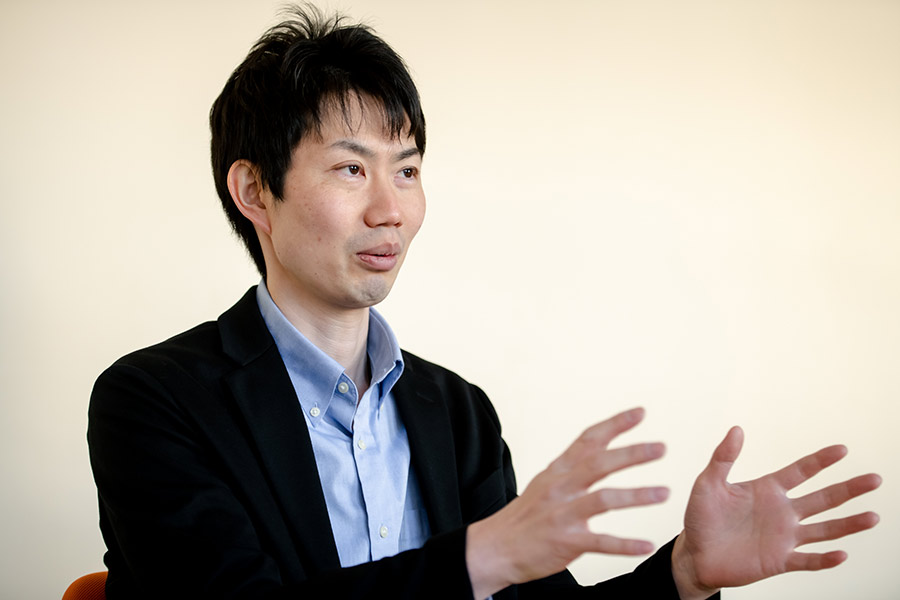
Did you aspire to become a researcher since childhood?
No, it wasn’t until I joined a laboratory in my third year of university that I discovered how fascinating research could be. The connection between what I learned in class and the experiments in the laboratory was truly intriguing. I thoroughly enjoyed my time in the laboratory, surrounded by a supportive supervisor and lab members.
It was also significant that my research focused on plastics and polymers, which are familiar materials in our daily lives. Seeing the materials that we worked with in the lab sold as actual products boosted my motivation for research.
You also experienced a company after obtaining your master’s degree
Yes, experience at a company taught me a lot, but it also made me realize the lack of knowledge. I, therefore, decided to go on to a doctoral course to study more and more deeply.
That’s a big decision!
It was indeed a big decision. I faced opposition from my family, and I kept it to myself. However, I had no doubts that it was the right choice for me at that time. During my doctoral program, I had the valuable experience of studying abroad. After obtaining my Ph.D., I gained confidence in my research. My family, who initially opposed my decision, ended up supporting me, and I am truly grateful for their support. Without them, I couldn’t have obtained my Ph.D.
Changing the shape of polymers to alternate their physical and functional properties
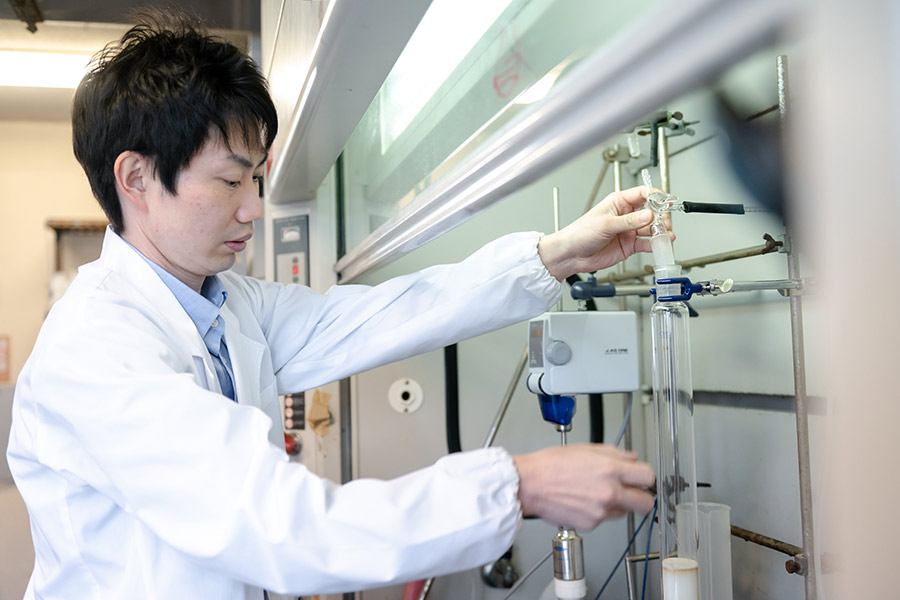
Please tell us about your research on “changing the shape of polymers”
A macromolecule, also known as a polymer, is a substance with a high molecular weight. Polymers typically have a “linear” structure formed by the combination of numerous low-molecular-weight, monomers. However, there are also polymers with various shapes (topologies), such as branched or cyclic structures. I have developed a technology that can alter the shape of polymers from one form to another. Specifically, I have successfully transformed polymers from branched to linear and from linear to cyclic structures.
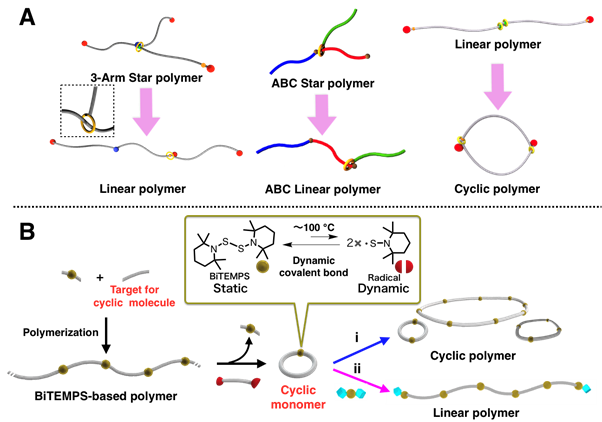
The reason why it is necessary to change the shape of the polymer is that the shape is directly linked to various properties and functions, such as thermal, mechanical, and engineering properties of the substances. If we can modify the shape of the materials freely, we can control their properties and functions, which expands the potential of polymer application.
The phrase “changing the shape” may sound simple and easy, but is it actually difficult to do with polymers?
Yes, it’s actually quite difficult to change the shapes of molecules, especially polymers, while maintaining their composition, such as molecular weight and constituent components. It would be nice if we could cut and paste on paper with scissors and glue to change its shape, but it’s not that simple with molecules. In particular, converting polymers into cyclic shapes has been extremely challenging.
Cyclic polymers have unique properties that make them potentially useful in various fields, such as medicine and materials. However, they are not widely used in industry due to the difficulty of producing them in large quantities. However, my research has overcome this challenge by developing a technique to mass-produce cyclic-shaped polymers and investigate their properties. I believe that this technique can be applied to various fields.
“Making bread from plastic,” pursuit of a dream recycling system

Please tell us about another study you are working on
It is recycling research with the concept of “creating fertilizer from waste plastic.” The research is based on my master’s thesis research. It is very interesting to look back to 15 years ago when I presented similar data at an academic conference. At that time, my research received no attention.
Through continued efforts to change the approach and presentation of the research, I have recently gained attention from various fields as a technology that could solve food shortages and global warming.
The plastic I use for this research is polycarbonate. When polycarbonate is sprayed with ammonia water, it easily decomposes into urea and monomer. Of these, the monomers are reused to synthesize new polycarbonates, while the urea can be used as a plant fertilizer. This approach represents a next-generation recycling system that I advocate.
While research on decomposing plastics into monomers is being conducted worldwide, my idea of using decomposition products as fertilizer is unique. By using the decomposition products from our technique as plant fertilizer, we were able to promote plant growth. This result demonstrates the effectiveness of our technique.
Moving forward, I aim to expand this technique to various types of plastics, with the ultimate goal of “Making Bread from Plastic” – a dream technology that appears in the animation “Future Boy Conan*.” Imagine “growing wheat with plastic-derived fertilizer to bake bread!” We will continue pursuing this vision and develop new ways to recycle plastics while benefitting agriculture and the environment.
*Future Boy Conan is a Japanese anime series directed by Hayao Miyazaki. It was the first hand-drawn Japanese animation aired on Japan’s national public television station, NHK. The series takes place in a post-apocalyptic world where a final war using “the super electromagnetic weapon,” which possessed destructive power greater than nuclear weapons, has caused the continents to shift and cities to be submerged under the sea. The story follows a boy named Conan and his adventures in this new world. It was Miyazaki’s directorial debut work.
Bridging the Past and the Future: Research that Creates History
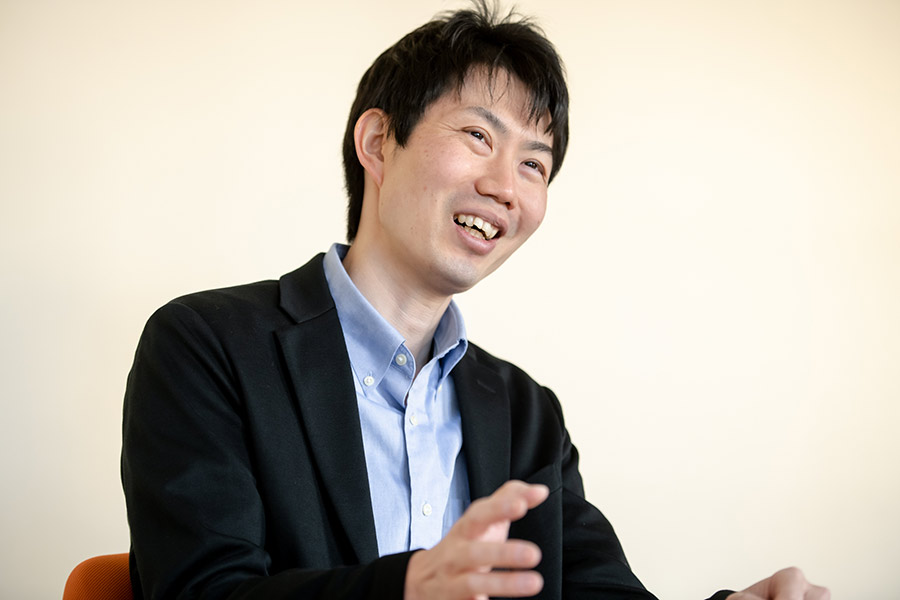
Is there anything you are conscious of when proceeding with your research?
I always remind myself that “research cannot be conducted by oneself alone.” It takes people to guide, cooperate, and evaluate to make research successful. While expressing my gratitude to those around me, I am determined to continue my research.
At the same time, I want to give back to the younger generation the kindness I have received from those around me. For that reason, I put effort into devising education methods. For example, I provide students in my laboratory with tasks that seem likely to succeed at first. This is because I want them to accumulate successful experiences to know the joy of research. Once the students are motivated, I will give them difficult themes that they may think, “I can not do this,” and wait and see interesting results. To use my favorite analogy from “Hikaru no Go*,” I am waiting for the students’ “Divine Move.”
As such, I will continue to create an environment where students can maximize their abilities and talents. If you are interested, please join our lab.
Hikaru no Go is a manga that revolves around the board game of GO, created by Yumi Hotta and drawn by Takeshi Obata. The story follows Hikaru Shindo, a sixth-grader student who becomes possessed by the spirit of Sai Fujiwara, a genius Go player from the Heian period (794 to 1185) who resided in an old Go board. With Sai’s help, Hikaru begins to develop a passion for Go and pursue the path of becoming a professional Go player.
Last but not least, please tell us about your future plan.
Research is a continuous flow from the past to the future. As a researcher who is a part of this flow, I want to make a big “Move” enough to affect the growth of young researchers. By doing so, I hope to contribute to the advancement of related research fields during my lifetime and retire from research like Sai Fujiwara, who bridged the past and future of Go World.
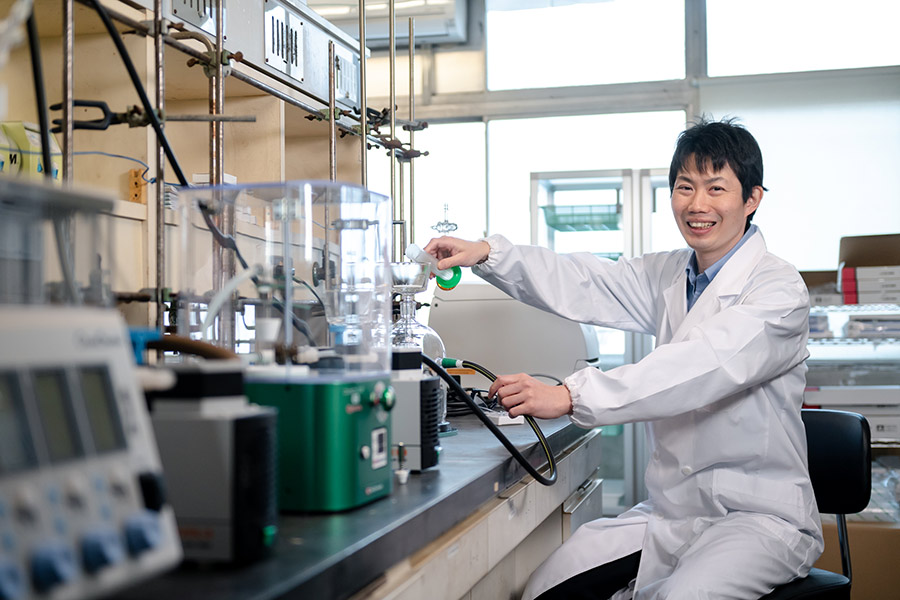
Recommend
-
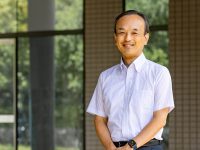
Children-centered support and school operations: On the occasion of the founding of the Children and Families Agency
2023.02.15
-
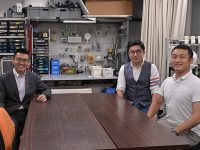
Solving Real-World Healthcare Challenges: The Power of Medical-Engineering Collaboration in Research and Education
2023.03.23
-
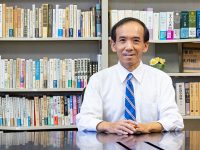
What causes nations and regions to perceive the COVID-19 crisis differently?〜Insights from the Humanities and Social Sciences Needed for Disaster Management Research
2022.12.12


